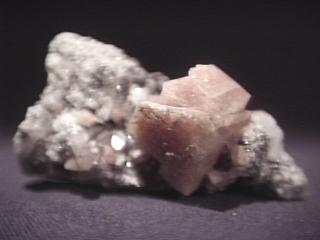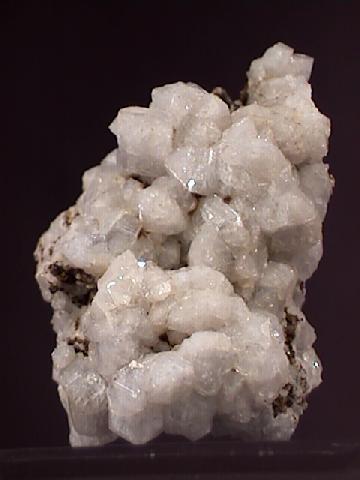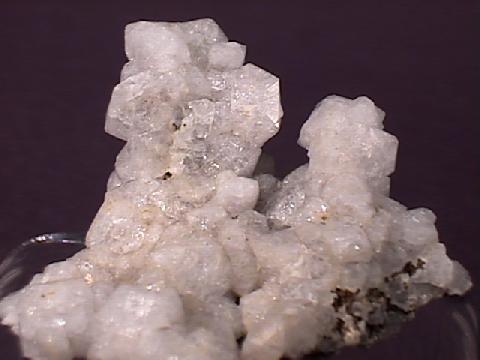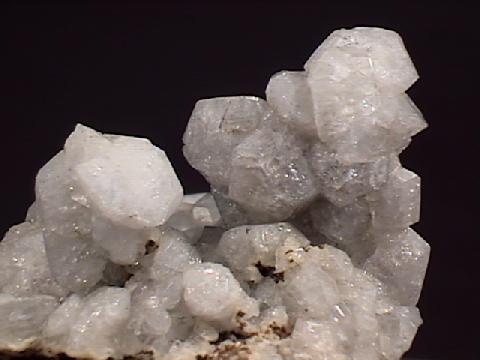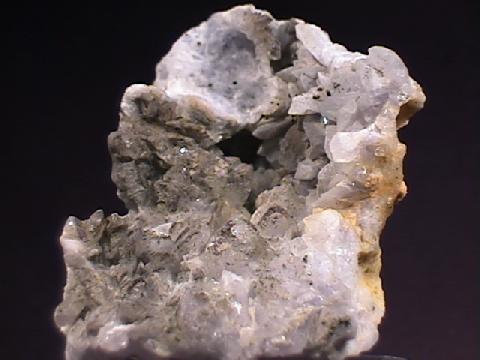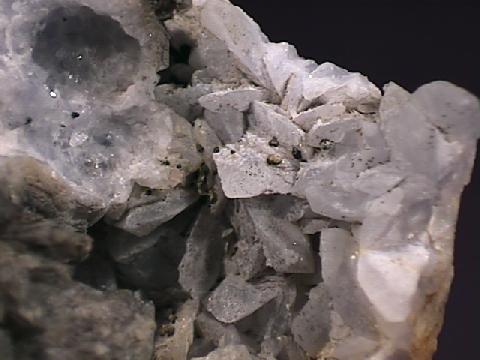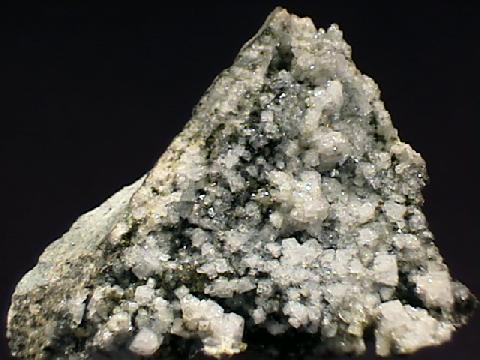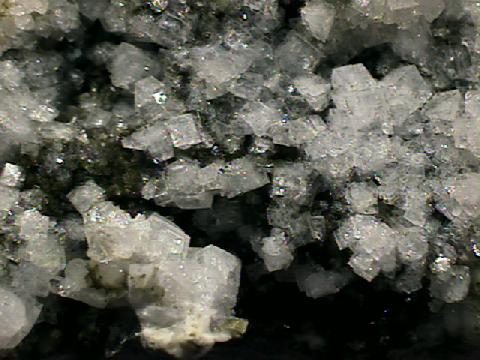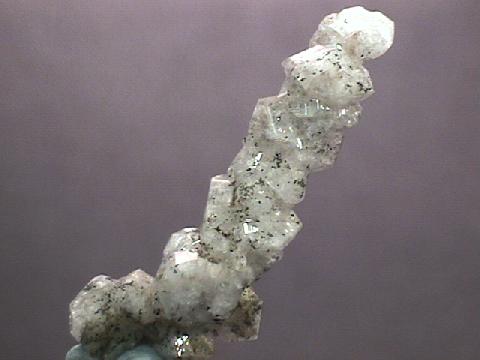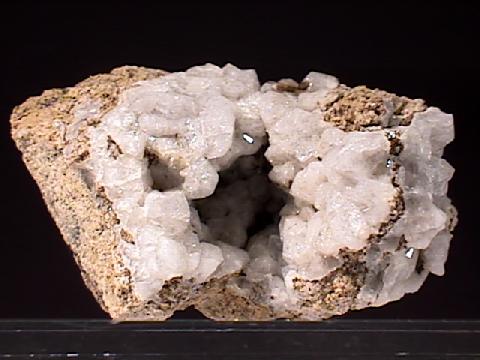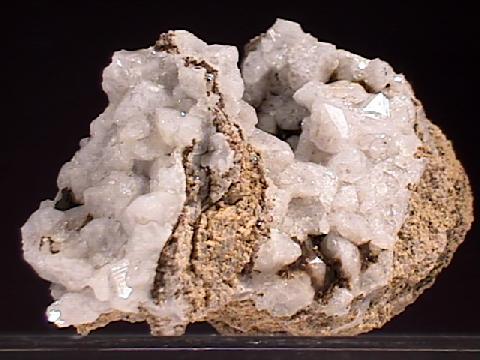 THE MINERAL CHABAZITE
THE MINERAL CHABAZITE
- Chemistry: CaAl2Si4O12 - 6H2O, Hydrated calcium aluminum silicate
- Class: Silicates
- Subclass: Tektosilicates
- Group: Zeolites
- Uses: Mineral specimen and chemical filter.
Specimens
One vesicle, which can look like a geode, can have an amazing assortment of minerals and chabazite is sometimes a key component in these veritable mineral treasure troves. The mix may contain sprays of natrolite's or scolecite's bright, needle thin crystals, curved pink crystals of stilbite and blocky, pearly, coffin shaped crystals of huelandite. Included in this diverse mix and making its own marked distinction in character could be the angular, vitreous, pseudocubic crystals of chabazite.
The typical crystal of chabazite is a
Chabazite's structure has a typical zeolite openness that allows large ions and molecules to reside and actually move around inside the overall framework. The structure actually contains open channels that allow water and large ions to travel into and out of the crystal structure. The size of these channels controls the size of the molecules or ions and therefore a zeolite like chabazite can act as a chemical sieve, allowing some ions to pass through while blocking others.
PHYSICAL CHARACTERISTICS:
- Color is clear, white, pink, yellowish, reddish and brown.
- Luster is vitreous.
- Transparency: Crystals are transparent to translucent.
- Crystal System is trigonal; bar 3 2/m
- Crystal Habits include blocky rhombohedral crystals that can look cubic (pseudocubic) because the angle between the faces is nearly 90 degrees. Aggregates form crusts and granular masses. Twinning is common with the penetration twin rotated around the c-axis.
- Cleavage is poor in three directions parallel to the faces of the rhombohedron.
- Fracture is uneven.
- Hardness is 4 - 5.
- Specific Gravity is approximately 2.0 - 2.2 (very light)
- Streak is white.
- Other Characteristics: Unlike calcite, does not react to acids.
- Associated Minerals are quartz, calcite, scolecite, apophyllite, natrolite, heulandite, stilbite and other zeolites.
- Notable Occurrences include Poona, India; Berufjord, Iceland; Columbia Co., Oregon, Passaic Co., New Jersey and in Yellowstone Park, USA; Cumberland Co., Nova Scotia; New Zealand, Rhineland, Germany and Switzerland.
- Best Field Indicators are crystal habit and symmetry, density, hardness, luster, lack of reaction to acids and associations.

